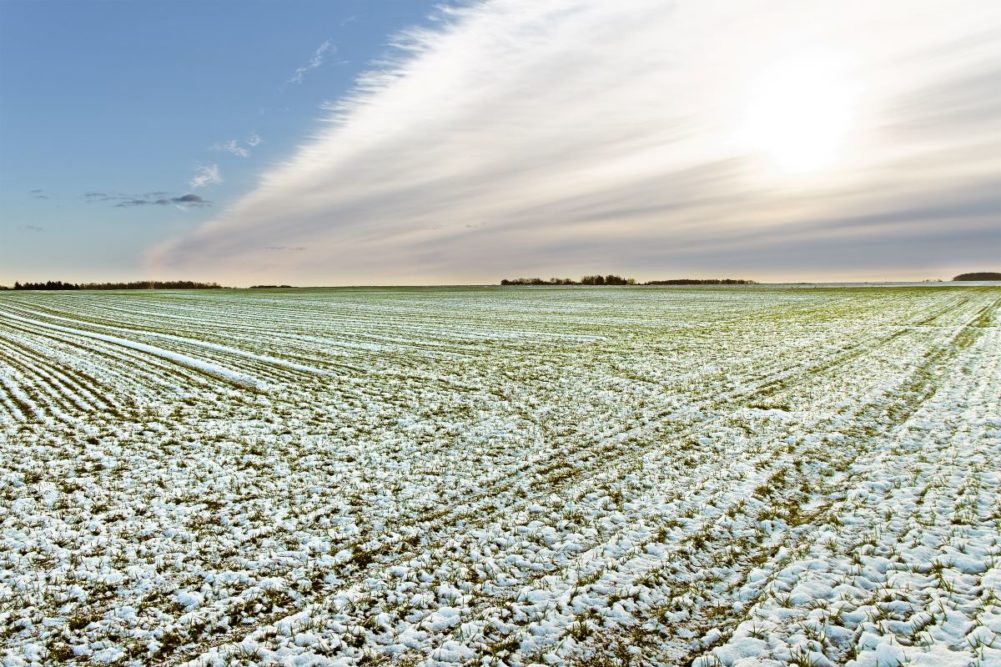MANHATTAN, KAN. — US Department of Agriculture state field offices in early January issued crop progress and condition summations for December, revealing the condition of the dormant winter wheat crop moved in mixed directions depending on state.
Veteran traders and merchandisers were quick to point out that conditions still early in the dormancy period historically don’t necessarily correlate with production and yield figures for a crop that won’t be harvested for 7 to 8 months. Spring and early summer rainfall is an important factor in crop size and quality.
And then there is the classic wheat grower chestnut “dust it in and bust the bin.” But industry sources said for that classic maxim to hold true, there must be an underlying subsoil bank of moisture for plants to draw on, which in turn requires sufficient deposits of precipitation made at some point during the crop cycle.
On the moisture front, the early winter moisture picture looked somewhat grim in Kansas. The National Agricultural Statistics Service of the USDA on Jan. 3 rated the state’s topsoil moisture 43% very short, 26% short, 29% adequate and 2% surplus. Subsoil moisture supplies were rated 47% very short, 34% short, 18% adequate and 1% surplus.
Still, the portion of the crop in good to excellent condition in the top hard red winter wheat production state of Kansas slipped only a few percentage points over the course of December. The USDA office in Manhattan rated the condition of Kansas winter wheat 2% excellent, 17% good, 32% fair, 26% poor and 23% very poor. That marked a setback from the office’s ratings a month earlier of 2% excellent, 20% good, 36% fair, 24% poor and 18% very poor.
A dearth of moisture in production areas was undoubtedly part of the worsening condition. The entirety of Kansas’ hard red winter wheat production areas was in drought, according to the USDA’s appraisal of the Dec. 27 US Drought Monitor. That map indicated more than half the state — all the area west of a diagonal line from the border with southwest Nebraska to the southeastern corner of Kansas — was in exceptional or extreme drought, the two highest intensity rating categories on the Drought Monitor. The remainder of the state ranged from severe drought to abnormally dry.
Around the horn in other central and southern Plains states, conditions saw mixed changes in the month since USDA offices had last appraised them. Oklahoma City outpost of the USDA pegged winter wheat conditions at 1% excellent, 37% good, 35% fair, 23% poor and 4% very poor. That marked an improvement from 31% good to excellent on Nov. 27. But the percentage of the crop rated poor to very poor increased in that time from 24% to 27%. Texas had not released its December progress and conditions summation by Jan. 4.
Colorado’s USDA field office in Lakewood said that state’s winter wheat was 50% good, 35% fair, 10% poor and 5% very poor (none excellent). That put the state’s good-to-excellent rating up significantly from 30% in the previous appraisal Nov. 29, albeit sans the sliver of plants in excellent condition. In Nebraska, the USDA office in Lincoln put winter wheat conditions on Jan. 1 at 2% excellent, 16% good, 46% fair, 26% poor and 10% very poor. That was slightly worse than 20% good to excellent at the release of the previous report Nov. 27.
South Dakota winter wheat on Jan. 1 was seen at 16% good, 63% fair, 16% poor and 5% very poor (none excellent). That was a marked decline from 27% good to excellent on Nov. 27. Montana winter wheat on Jan. 1 was rated 6% excellent, 16% good, 67% fair, 10% poor and 1% very poor, a sharp decline from 44% good to excellent a little more than a month earlier. Montana’s report indicated 77% of the state’s winter wheat had heavy freeze and drought damage and 82% had heavy wind damage.
Meanwhile, few reports on the US soft red winter wheat crop had been issued by Jan. 4. Those released indicated the crop was in great shape. The USDA’s Heartland Regional Field Office said Illinois winter wheat was 11% excellent, 57% good, 31% fair and 1% poor.





